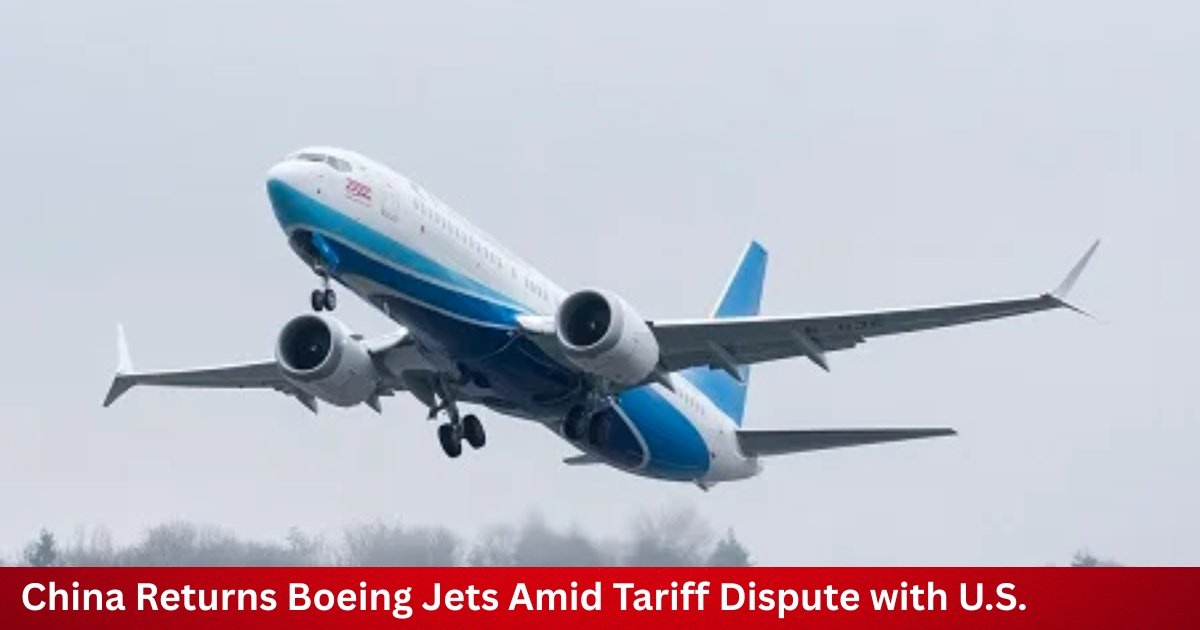
Due to escalating trade tensions, China returned the Boeing aircraft ordered from the United States. This action marked the latest retaliation against tariffs imposed under President Trump’s trade policies.
Further, as global markets react, the decision raises questions about the future of U.S.-China relations and the broader implications for international commerce.
A Tension Turn in U.S.-China Trade Relations
U.S.-China trade relations have taken a turn with China’s decision to return Boeing aircraft amid escalating tariff disputes. China took this step due to increased tariffs on imports to 145%. China imposed a 125% tariff on U.S. goods, including Boeing jets. Thus, this move of China Airlines to halt acceptance of Boeing aircraft directly impacts the aerospace giant’s operations.
Boeing, facing the return of up to 50 aircraft originally destined for Chinese carriers, is seeking alternative buyers in global markets. CEO Kelly Ortberg expressed confidence in the company’s ability to navigate these challenges.
Later, the CEO of Boeing cited strong international demand and a backlog of 5,600 aircraft orders. Despite the setback, Boeing’s first-quarter financials for 2025 show a narrowed loss of $31 million, an improvement from the previous year’s $355 million loss.
Why China Returned the Boeing Jets?
China’s decision to return Boeing aircraft to the U.S. stems from escalating trade tensions and retaliatory measures between the two nations. What prompted China to return the Boeing jets?
- Strategic Shift to Airbus and COMAC: Chinese airlines are favoring Airbus and domestic manufacturer COMAC over Boeing. In July 2024, China’s three largest airlines placed orders for nearly 300 aircraft from Airbus. Thus signaling a significant pivot away from Boeing.
- Impact of Rare Earth Export Restrictions: In addition to halting Boeing deliveries, China has announced restrictions on the imports of seven rare earth minerals and magnets. These are the essential components in different industries, including aerospace. Therefore, these restrictions posed significant challenges for U.S. manufacturers and led to supply chain disruptions, complicating Boeing’s operations.
- Boeing’s Reallocation of Aircraft: Boeing is actively seeking alternative buyers for up to 50 aircraft originally destined for Chinese airlines. The company already received interest from other global carriers and is considering redirecting planes to markets like India.
Impact on Boeing’s Business and Global Reputation
China’s decision to return Boeing aircraft amid ongoing trade tensions impacted Boeing’s business operations and global reputation. The factors that influence the company’s stand in the aerospace industry are:
- Strategic Divestitures to Bolster Finances: In an effort to improve its financial stability, Boeing sold portions of its digital aviation assets, including Jeppesen and ForeFlight, to private equity firm Thoma Bravo for $10.55 billion. Such a move is part of CEO Kelly Ortberg’s strategy to reduce debt by diverting non-core assets, following financial and reputational challenges from safety incidents and prolonged labor strikes.
- Persistent Safety Culture Challenge: The Federal Aviation Administration (FAA) has indicated that Boeing’s safety culture may take 3 to 5 years to complete. Despite some short-term improvements, the FAA emphasizes that a fundamental culture shift is needed to prioritize safety and quality over profits.
- Increased Regulatory Scrutiny: Following safety incidents, including a mid-air emergency in January 2024, Boeing faces heightened oversight from the FAA. The agency has implemented strict inspection protocols and limited production increases until Boeing demonstrates sustained improvements in safety and quality.
Aviation Industry Reacts to the Trade Fallout
International carriers are reassessing their fleet expansion plans in response to the trade fallout. Notably, Ryanair’s CEO Michael O’Leary, indicated a potential delay in accepting Boeing aircraft deliveries if associated costs rise due to tariffs. Ryanair anticipates receiving 25 Boeing planes starting in August but many postpone these deliveries to early 2026, hoping for a resolution to the trade dispute.
With Chinese airlines halting acceptance of new aircraft, Boeing is actively seeking alternative markets for its planes. The company has already redirected several 737 MAX 8 aircraft, initially intended for Chinese carriers to other global consumers. China, which now accounts for about 10% of Boeing’s commercial aircraft backlog, had approximately 50 scheduled deliveries for the year, including 41 already built or in production.
Conclusion
China’s return of Boeing jets amid ongoing tariffs marks a pivotal moment in U.S.-China trade relations. As Boeing navigates supply chain challenges and seeks new markets, the global aviation industry braces for long-term impacts. Thus highlighting the interconnection between geopolitical, commerce, and the future of aerospace innovation.
